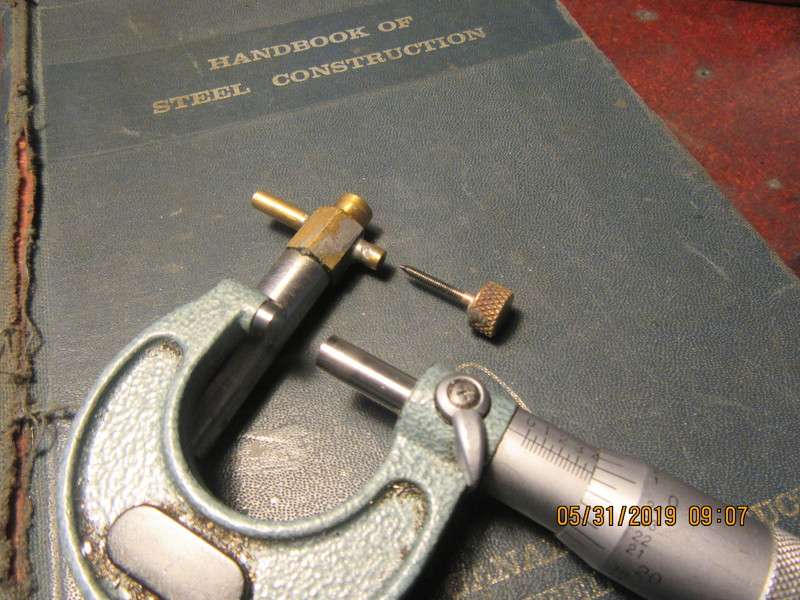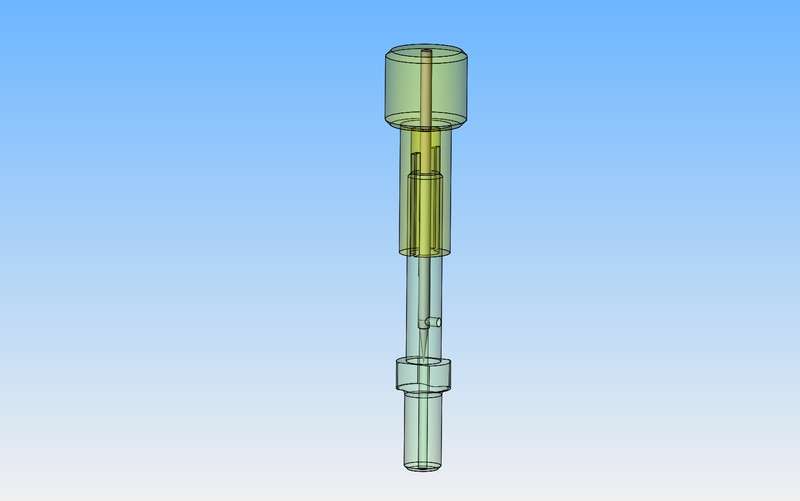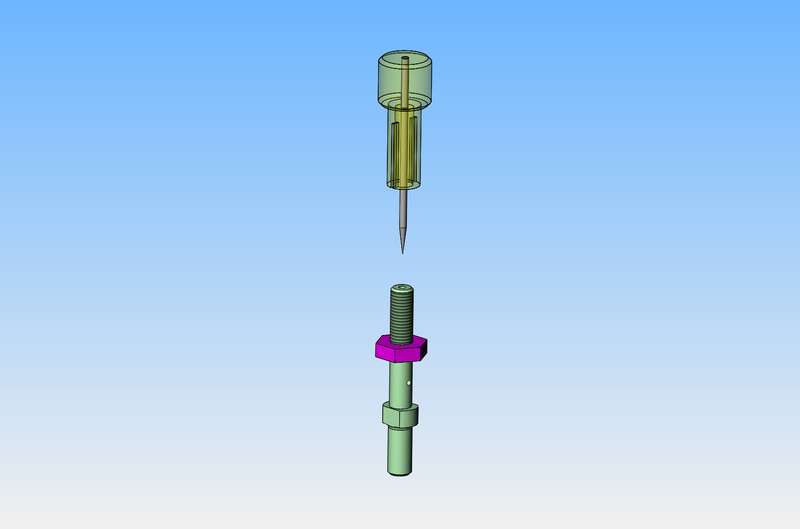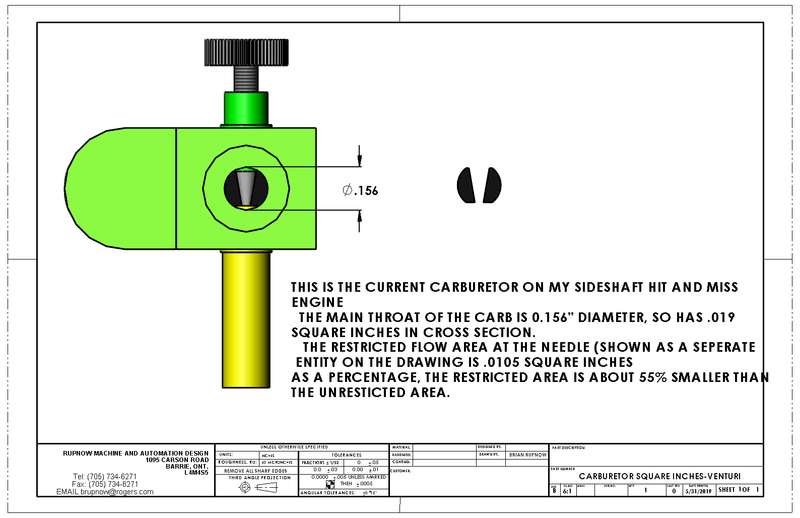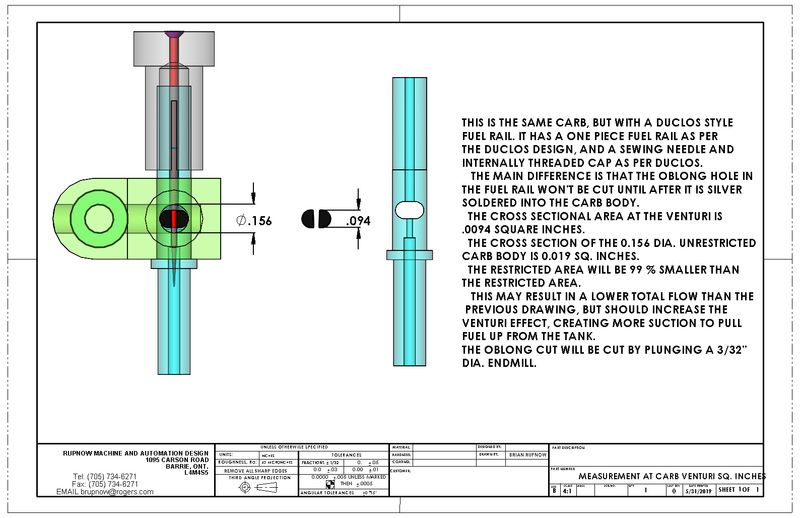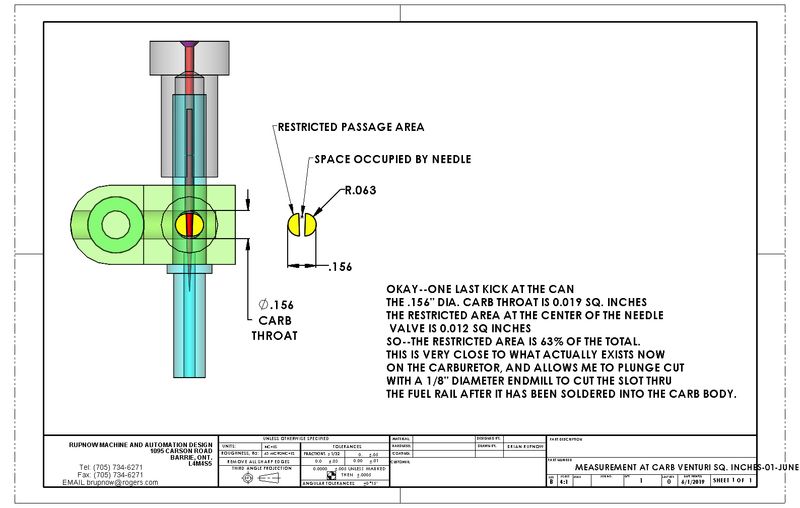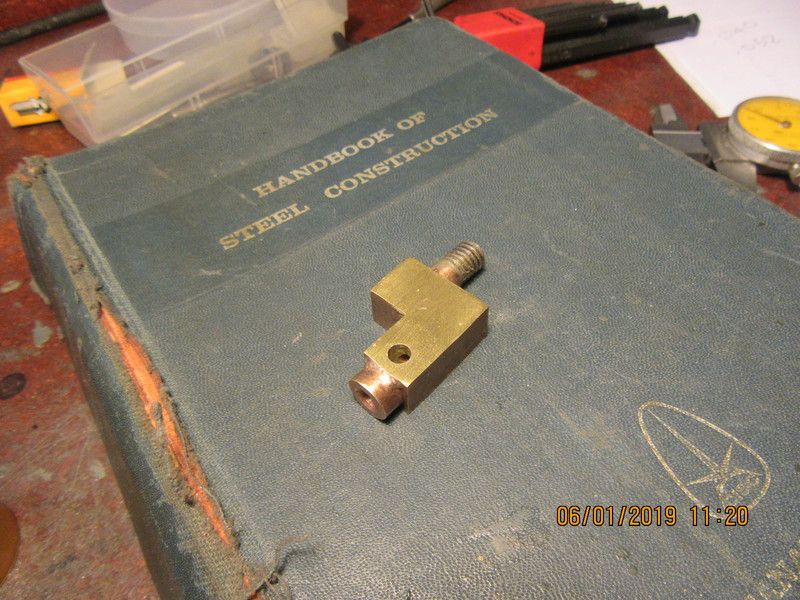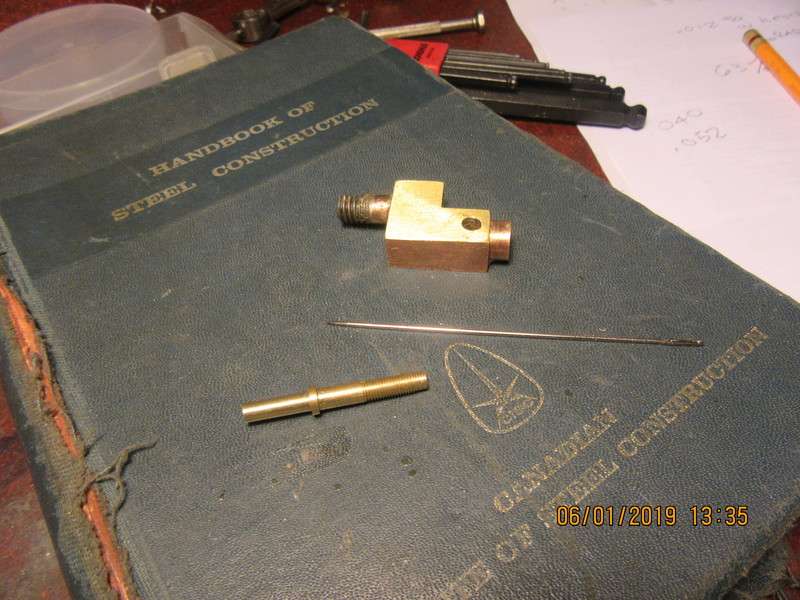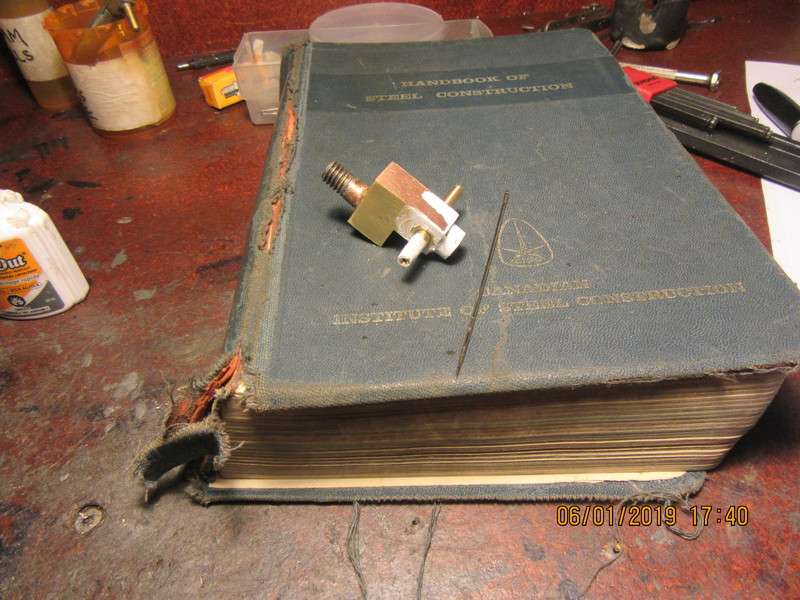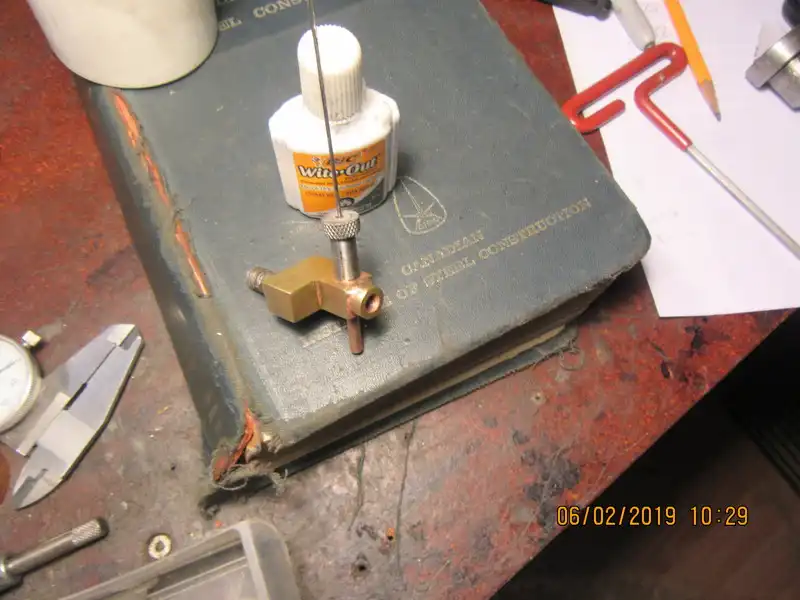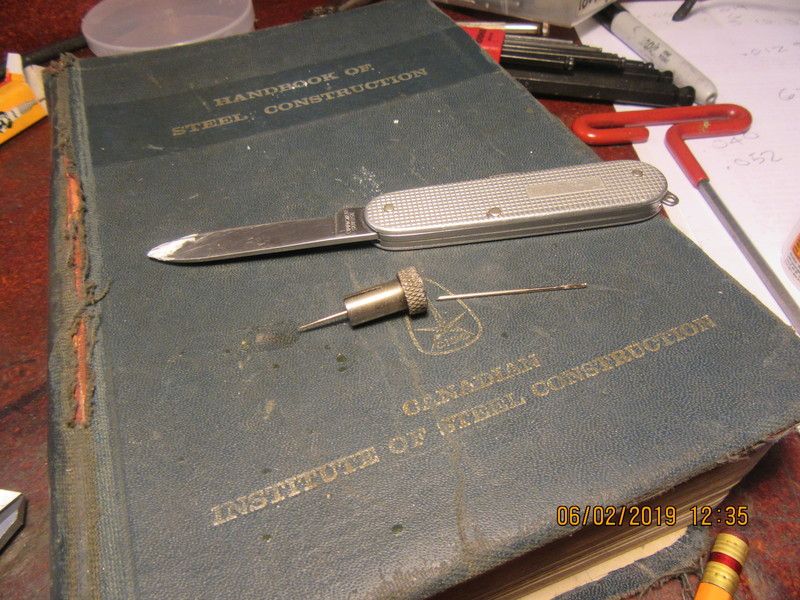Yes, I do make my own carburetors. The throttled carburetors that I make are almost an exact copy of those made by Malcolm Stride for his Bobcat and Jaguar engines, and they give remarkably good results. I make carburetors for my hit and miss engines as well, and I have varying results. In the picture you will see a carburetor that I copied from an old Upshur hit and miss engine. I got lucky and it worked very well. My problems with this style of carburetor are #1--There is simply no way that I can form a perfect taper on a #2-56 bolt, nor can I accurately make a fully threaded 2-56 needle. Problem # 2 is that the two small "tubes" that the needle pass thru are separate pieces, and even with a jig it is nearly impossible to line them up perfectly. They have to be aligned perfectly because the needle screws into one side, and the taper of the needle must fit perfectly concentric into the fuel delivery hole in the other piece. There is another way to do this as suggested by Philip Duclos, where the two separate pieces are made as one complete single piece that runs completely thru the carburetor body, thus eliminating any concentricity problems.
